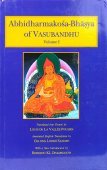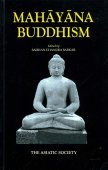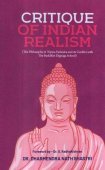Sautrantika, Sautrāntika, Sautrāntikā: 9 definitions
Introduction:
Sautrantika means something in Buddhism, Pali, Hinduism, Sanskrit, Jainism, Prakrit. If you want to know the exact meaning, history, etymology or English translation of this term then check out the descriptions on this page. Add your comment or reference to a book if you want to contribute to this summary article.
In Hinduism
General definition (in Hinduism)
Source: WikiPedia: HinduismThe Sautrāntika were an early school of Buddhist philosophy, generally believed to be descended from the Sthaviravada by way of their immediate parent school, the Sarvāstivādins. Their name means literally "those who rely upon the sutras", and indicated their rejection of the Abhidharma texts of other early Buddhist schools.
The Sarvāstivādins sometimes referred to them as the Dārṣṭāntika school, meaning "those who utilize the method of examples". This latter name may have been a pejorative label. Charles Willemen identifies the Sautrāntika as a Western branch of the Sarvāstivādins, active in the Gandhara area, who split from the Sarvāstivādins sometime before 200 CE, when the Sautrāntika name emerged.
According to the Abhidharmakośa of Vasubandhu, the Sautrāntika held the view that there may be many buddhas simultaneously, otherwise known as the doctrine of contemporaneous buddhas.
They used the concept of an āśraya (substrate, refuge) to explain the continuity of consciousness through rebirth, whereas the Pudgalavādins and the Vātsiputrīya school posited a pudgala (a 'personal entity' distinct from the five skandha), and where non-Buddhist Indian philosophy typically referred to an ātman.
In Buddhism
General definition (in Buddhism)
Source: archive.org: The Indian Buddhist Iconography (b)Sautrāntika (सौत्रान्तिक) refers to one of the schools of philosophy in Buddhism.—[...] Thus there were three Yānas in Buddhism about 300 A.D. which may approximately be taken as the time of Asaṅga. But against these three Yānas there were four schools of philosophy in Buddhism, namely, the Sarvāstivāda (Sautrāntika), the Vāhyārthabhaṅga (Vaibhāṣika), the Vijñānavāda (Yogācāra), and the Śūnyavāda (Madhyamaka). How these four systems of philosophy were distributed amongst the three Yānas is one of the vital questions of Buddhism.
According to the Tattvaratnāvalī of Advayavajra (12th century A. D.):—“three are the Yānas, Śrāvakayāna, Pratyekayāna and Mahāyāna. There are four theories; Vaibhāṣika, Sautrāntika, Yogācāra and Madhyamaka. Śrāvakayāna and Pratyekayāna are explained by the theories of the Vaibhāṣikas. Mahāyāna is of two kinds: Pāramitānaya and Mantranaya. Pāramitānaya is explained by the theories either of Sautrāntika, Yogācāra or Madhyamaka. Mantranaya is explained by the theories of Yogācāra and Madhyamaka only”.
Source: Buddhist Door: GlossarySautrantika:—Sutravada in Sanskrit, Suttavada in Pali. Libereally means reliance upon sutras, the original Buddhist texts, therefore emphasized the efficacy and authority of the sutras. Also called Sankrantivada as it held the view that the Skandhas transmigrate from the former world to the later world. It is one of the Hinayana sect, a branch of Sthaviradin developed from Sarvastivadah. Vasubandhus arguments in the Abhidharmakosa criticize the Vaibhasikas from a Sautrantika viewpoint. The ideas influenced Mahayana doctrines to form Yogacara school.
In Jainism
Jain philosophy
Source: archive.org: Anekanta Jaya Pataka of Haribhadra SuriSautrāntika (सौत्रान्तिक) refers to one of the four schools of Buddhism, as occurring in the Anekāntajayapatākā-prakaraṇa, a Śvetāmbara Jain philosophical work written by Haribhadra Sūri.—[Cf. Vol. I, P. 80, l 10]—‘Sautrāntika’ is the name of one of the four schools of Buddhism, the other three being (i) Vaibhāṣika or Āryasamitīya or Sarvāstivāda, (ii) Yogācāra or Vijñānavāda and (iii) Śūnyavāda or Mādhyamikavāda or Nairātmyavāda. The followers of the Sautrāntika school attach greater importance to the Sūtras of Lord Buddha than to the commentaries, and hence this name of their school. This school holds that the external world is not directly perceived but only indirectly inferred from the images it creates in the mind. Dharmatrātṛ, Ghoṣa, Vasumitra and Buddhadeva are the well-known writers of this Sautrāntika school.
-
Languages of India and abroad
Sanskrit dictionary
Source: DDSA: The practical Sanskrit-English dictionarySautrāntikā (सौत्रान्तिका).—m. pl. Name of one of the four great schools of Buddhism; cf. सौगत (saugata).
Derivable forms: sautrāntikāḥ (सौत्रान्तिकाः).
Source: Cologne Digital Sanskrit Dictionaries: Edgerton Buddhist Hybrid Sanskrit DictionarySautrāntika (सौत्रान्तिक).—an adherent of the Buddhist school of this name: Mahāvyutpatti 5147.
Source: Cologne Digital Sanskrit Dictionaries: Shabda-Sagara Sanskrit-English DictionarySautrāntika (सौत्रान्तिक).—m. Plu.
(-kāḥ) Name of one of the four great schools of Bud'Dhism
Source: Cologne Digital Sanskrit Dictionaries: Monier-Williams Sanskrit-English Dictionary1) Sautrāntika (सौत्रान्तिक):—[from sautra] m. a follower of the Sūtrānta (q.v.)
2) [v.s. ...] [plural] Name of one of the four great schools of Buddhism (said to admit the authority of the Buddhist Sūtras, but not of the Abhi-dharma), [Sarvadarśana-saṃgraha; Monier-Williams’ Buddhism 157.]
[Sanskrit to German]
Sanskrit, also spelled संस्कृतम् (saṃskṛtam), is an ancient language of India commonly seen as the grandmother of the Indo-European language family (even English!). Closely allied with Prakrit and Pali, Sanskrit is more exhaustive in both grammar and terms and has the most extensive collection of literature in the world, greatly surpassing its sister-languages Greek and Latin.
See also (Relevant definitions)
Starts with: Sautrantika-Yogacara.
Full-text (+34): Kumaralata, Sankrantivada, Madhyamaka, Cavuttirantikam, Yogacara, Sarvastivada, Shunyavada, Vijnanavada, Kshanikavada, Sutranta, Nastikamata, Cauttirantikam, Samkrantidrishti, Saugata, Sautrantika-Yogacara, Apramanadosha, Paramitanaya, Kshanika, Anu, Shabdarthasambandha.
Relevant text
Search found 27 books and stories containing Sautrantika, Sautrāntika, Sautrāntikā; (plurals include: Sautrantikas, Sautrāntikas, Sautrāntikās). You can also click to the full overview containing English textual excerpts. Below are direct links for the most relevant articles:
Maha Prajnaparamita Sastra (by Gelongma Karma Migme Chödrön)
Part 12 - Non-existence of the outer object < [Chapter XX - The Virtue of Generosity and Generosity of the Dharma]
Appendix 1 - Comparison of asaṃskṛta in Buddhist literature < [Chapter XLVIII - The Eighteen Emptinesses]
Appendix 2 - Notes regarding the kṣaṇa time unit < [Chapter XXV - Patience Toward the Dharma]
Brahma Sutras (Shankaracharya) (by George Thibaut)
II, 2, 18 < [Second Adhyāya, Second Pāda]
The Buddhist Philosophy of Universal Flux (by Satkari Mookerjee)
Chapter XVI - Nirvāṇa < [Part I - Metaphysics]
Chapter IV - A Critical Estimate of the Sautrāntika Theory of Causation < [Part I - Metaphysics]
Chapter XIV - A Critical Estimate of the Non-soul Theory of the Buddhist Philosophers < [Part I - Metaphysics]
A comparative study between Buddhism and Nyaya (by Roberta Pamio)
2. The concept of Reality in the Four Buddhist Schools < [Chapter 2 - The Four Buddhist Schools of Philosophy]
2. The Nature of Pramāṇa < [Chapter 1 - The Nature and Criterion of Knowledge]
3.2. Epistemology of Vaibhāṣika and Sautrāntika < [Chapter 2 - The Four Buddhist Schools of Philosophy]
Brahma Sutras (Ramanuja) (by George Thibaut)
Sutra 2.2.25 < [Second Adyaya, Second Pada]
A History of Indian Philosophy Volume 1 (by Surendranath Dasgupta)
Part 10 - The Schools of Theravada Buddhism < [Chapter V - Buddhist Philosophy]
Part 19 - Brief survey of the evolution of Buddhist Thought < [Chapter V - Buddhist Philosophy]
Part 14 - Sautrāntika Theory of Perception < [Chapter V - Buddhist Philosophy]
Related products



